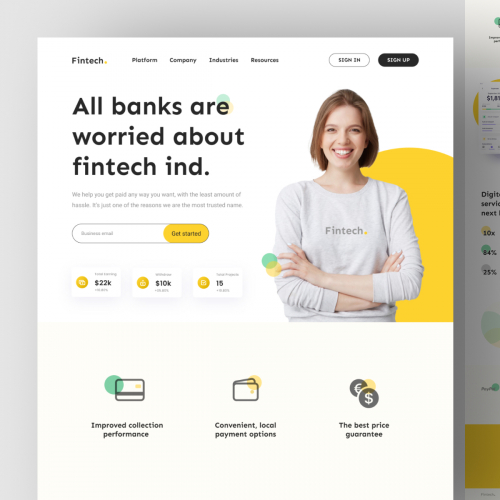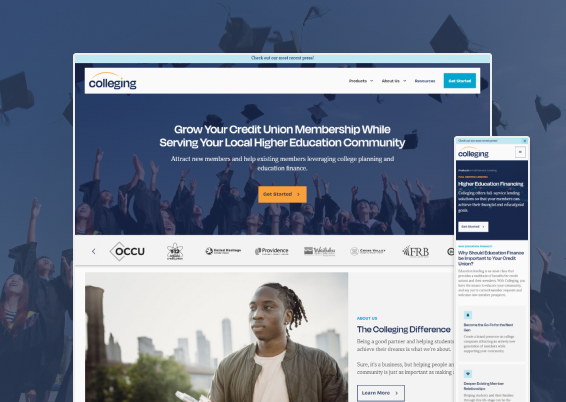What Makes a Modern Website Design Stand Out from the Competition
What Makes a Modern Website Design Stand Out from the Competition
Blog Article
Boost Involvement With Innovative Site Design Solutions
In the realm of electronic communication, the relevance of ingenious internet site design solutions can not be overemphasized. A thoughtfully crafted user experience, underpinned by tactical visual design and interactive elements, can considerably improve individual engagement. By discovering numerous methods such as receptive style and tailored material, organizations can produce a platform that not just astounds users but likewise cultivates long-lasting commitment. The obstacle lies in recognizing the subtleties of individual habits and choices. This raises an important inquiry: what specific strategies can be carried out to make sure that a website continues to be user-centric and engaging?

Recognizing User Experience
Understanding customer experience (UX) is vital for developing efficient site style services, as it directly affects how customers engage with electronic platforms. A thorough UX strategy includes numerous components, including user, accessibility, and usability fulfillment, every one of which add to the overall performance of a site.
To start with, usability concentrates on how quickly customers can navigate and discover the details they seek - website design. A well-structured format, instinctive navigation, and clear contact us to activity are basic parts that improve functionality. Availability makes sure that all users, consisting of those with specials needs, can properly engage with the web site. This includes creating material that is certified with ease of access requirements and can be easily accessed using assistive technologies.
Furthermore, comprehending individual characters is important for customizing the experience to satisfy particular audience needs. By conducting individual research study and screening, developers can collect understandings that inform layout choices, guaranteeing the site not only fulfills visual objectives yet also meets functional needs. Ultimately, a thoughtful approach to UX design cultivates engagement, urges retention, and boosts general customer contentment, which are vital for the success of any kind of electronic system.
Visual Style Techniques
Integrating reliable visual design techniques is necessary for recording individual interest and improving the general customer experience on an internet site. A well-balanced visual hierarchy overviews individuals via the web content, permitting them to easily absorb and navigate information. This can be achieved through the tactical use typography, color pattern, and spacing, which collectively develop a natural and interesting format.
Shade plays a crucial duty in establishing and evoking emotions brand name identification. Using a well balanced color scheme that straightens with the brand's values can foster experience and count on. Furthermore, integrating top notch photos and graphics improves visual allure and can significantly boost user interaction.
Whitespace, typically neglected, is equally essential as it permits material to take a breath and protects against frustrating users with mess. It assists in simpler analysis and comprehension, resulting in a much more pleasurable browsing experience.
Last but not least, uniformity in style elements-- such as switch icons, styles, and fonts-- ensures a smooth customer journey, enhancing the brand's professionalism. By strategically applying these aesthetic style techniques, sites can not only attract site visitors however also encourage them to stay longer and involve more deeply with the web content.
Interactive Elements for Interaction
Engaging individuals effectively frequently pivots on the application of interactive components that welcome engagement and promote a vibrant browsing experience. These elements, consisting of quizzes, surveys, and interactive infographics, encourage users to actively participate instead of passively consume web content. By incorporating such functions, websites can not just catch attention however additionally improve individual retention.

Gamification is another effective strategy. Integrating game-like components, such as success or benefits for completing tasks, can transform ordinary communications right into satisfying experiences. This approach not just boosts engagement yet additionally urges customers to return, creating a devoted audience.
Additionally, interactive components can help with social sharing, intensifying an internet site's reach. Attributes like remark areas, share switches, and user-generated web content areas foster community communication, transforming site visitors into energetic participants. website design. Ultimately, the tactical use interactive aspects is necessary for developing a compelling and appealing website that reverberates with individuals
Flexible and receptive Style
A well-designed web site must focus on adaptive and receptive design to make certain ideal customer experiences across a variety of devices and screen dimensions. Responsive style utilizes fluid grids and versatile photos, allowing the layout to automatically change based on the visitor's screen size. This method makes certain that individuals can conveniently interact and navigate with the material, despite whether that site they are making use of a smartphone, tablet computer, or desktop computer .
On the other hand, flexible layout utilizes predefined layouts that are customized to details tool categories. This means that the site identifies the kind of device being used and serves the suitable format, which can boost packing times and maximize the display screen of essential components. While both approaches intend to enhance functionality, receptive style is often favored for its fluidness and seamless shift between devices.
Incorporating receptive and adaptive layout not just improves user fulfillment however additionally positively impacts search engine rankings. Look Continued engines focus on mobile-friendly sites, thus boosting exposure and attracting even more visitors. Spending in these design methods is crucial for services looking to engage their target market successfully and keep an affordable side in today's digital landscape. website design.
Studying Individual Responses and Information
User feedback and data analysis are necessary parts of effective site layout, as they supply valuable understandings into individual habits and preferences. By systematically examining and accumulating customer feedback through studies, usability testing, and analytics tools, developers can identify discomfort factors and areas for enhancement. This data-driven technique enables companies to adjust their website elements, ensuring that the customer experience straightens with target market expectations.
Analyzing metrics such as bounce prices, time on page, and click-through rates supplies a measurable viewpoint on customer interaction. These metrics assist developers recognize which content resonates and which areas may need optimization. Furthermore, A/B screening can be utilized to examine variations in layout, permitting designers to make informed decisions based upon user interactions.
Incorporating user responses not only improves site Get the facts functionality but additionally promotes a sense of community and trust fund. Engaging with customers with comments loops grows loyalty and urges repeat visits. Eventually, leveraging customer responses and data evaluation is essential to developing a dynamic, user-centered web site that adjusts to progressing user requirements and choices, thereby driving higher engagement and satisfaction.
Final Thought

An attentively crafted customer experience, underpinned by tactical aesthetic style and interactive aspects, can significantly improve individual engagement.Incorporating efficient aesthetic layout techniques is important for catching customer focus and improving the overall customer experience on a website.Customer responses and data evaluation are important parts of efficient site style, as they provide important understandings into individual actions and preferences. Inevitably, leveraging customer responses and data analysis is important to developing a dynamic, user-centered site that adjusts to evolving customer needs and preferences, thus driving higher interaction and complete satisfaction.
In conclusion, innovative internet site layout remedies significantly improve individual interaction by focusing on individual experience, utilizing reliable aesthetic approaches, and integrating interactive aspects.
Report this page